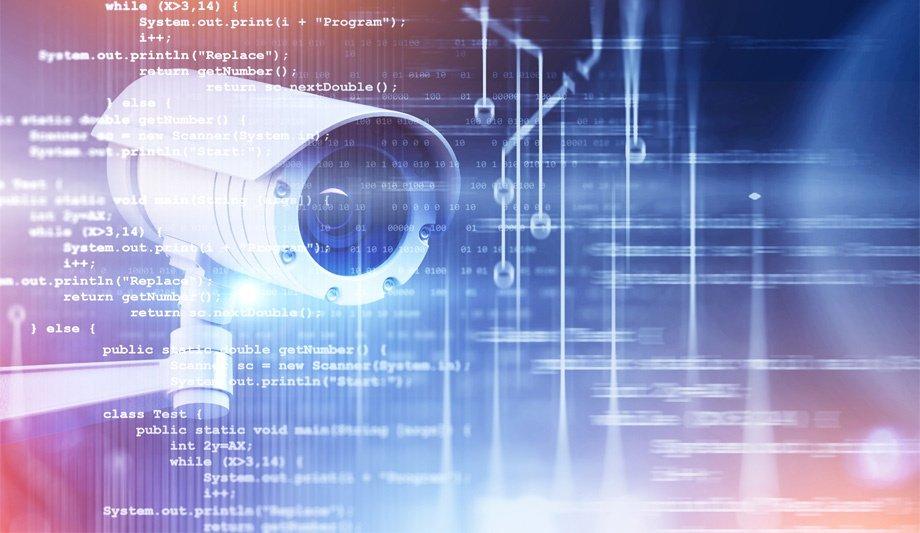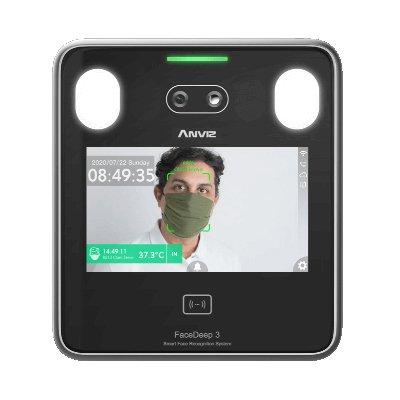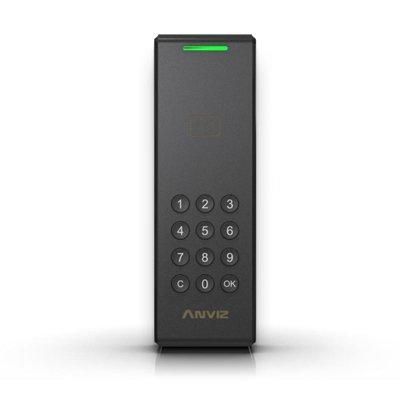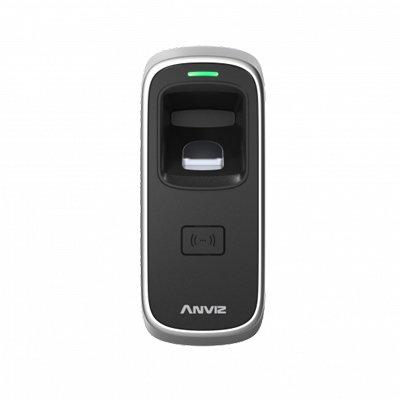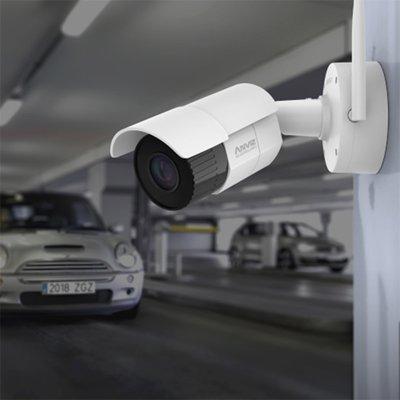
How are edge devices transforming security?
Editor Introduction
The Internet of Things (IoT) is driving innovation in the security marketplace, just as it is in almost every other market. IoT devices, also known as ‘edge devices’, provide sensing, processing ability, software, and other technologies to connect and exchange data.
The most common edge devices in the world of IP security are video cameras, which are becoming more intelligent and capable of processing the data they collect. We asked this week’s Expert Panel Roundtable: How are edge devices transforming the security marketplace?
Edge devices are getting smarter as the Internet of Things (IoT) really takes hold. The world is moving to a collection of sensors at the edge that gather data to be processed in Big Data analysis engines, which then derive further benefits from security systems, beyond just augmenting safety and security. Along with safety and protection, we are moving to a world where security data is regularly being used to reduce carbon footprints and improve the utility of the Built Environment. The wealth of information collected by security systems is perfect for this, giving a detailed view of how people and the facilities they use interact, enabling you to optimise their use and the resources you have. Organisations of all types are looking to get real value-add from their security systems purchases and expect to gain better insights into the running of their facilities, through the data they collect.
Edge or not is one of the hottest topics in the security market recently. With the continuous upgrading of the central processing unit (CPU), an edge device will be able to accurately identify and classify hundreds of persons, vehicles, and objects in seconds. It can push real-time events, reports, etc. and achieve complete access control and attendance management for thousands of people. The interconnection of powerful edge devices will also accelerate the security ecosystem‘s development. Customers will centrally manage access control, CCTV, alarms, intercoms, broadcasts, and other security edge devices on one unified management platform. All these advantages will help the customer reduce overall investment. Obviously, for large projects and complex applications, edge devices still face many challenges, such as we have to rely on the existence of back-end management servers. But for the SMB and Residential Security markets, the edge will no longer be a topic, but a trend.
As we increase image processing power at the edge, network cameras can process advanced analytics locally and only send the lightweight results as metadata to the backend server. Without edge-based analytics processing, compressed video streams (H.264/265) must first be decompressed at the server, before server-side analytics can be run. This requires an investment in server architecture and an ability to predict peak demand. Adding more cameras or more analytics requires significantly more server resources until it becomes cost-prohibitive and eventually gates further expansion for many users. Edge-based analytics processing not only saves significant server infrastructure costs, but it also enables a system to scale effortlessly, either on-premise or in the cloud, as an organisation’s needs evolve. As AI-based edge devices become ubiquitous, the ability to proactively alert operators to threats, monitor operational compliance, and supply valuable business intelligence transforms the role of these devices and presents new opportunities for security.
Advances in edge computing have made possible many new applications of security technology. Security devices such as network cameras have become increasingly capable of processing and analysing video at the edge. We are also seeing a new breed of sensors able to analyse sounds, such as gunshots or glass breaks. Also, new industrial IoT devices (temperature, water sensors, etc.) are now connected to physical security systems to go beyond traditional security. With more processing power available on the edge, organisations can easily move towards cloud and hybrid solutions, while running an ecosystem of IoT devices, without burdening their infrastructure. With a non-rigid approach to processing power and a combination of server, cloud, and edge capabilities, organisations can make use of distributed intelligence and operations to increase their security and business efficiency. However, be aware that edge devices can also introduce cyber vulnerabilities, and a resilient cyber security framework has never been more important.
Powerful edge devices are transforming the security marketplace, by making it possible to harvest valuable data in real time. As more cameras are deployed, it’s clear that they can’t all be watched with the same level of focus by human eyes. The latest AI-enabled cameras provide an error-free, proactive, front-line response to threats that help security teams do their jobs more efficiently. By utilising more edge-based processing, we also reduce the need for expensive backend servers. Edge-based analytics can analyse patterns and behaviours that extend beyond security to inform operations and sales teams. This actionable business intelligence might include insights on store layout efficiency and dwell times around product areas. These results then validate assumptions and reveal areas that are not performing as designed. In this way, security cameras have evolved into smart IoT sensors that can share data across departments and contribute directly to bottom line growth.
Edge devices, with respect to video surveillance, usually take the form of cameras with built-in storage for the video data and are managed in a cloud platform. There are some companies making inroads with this technology, but in the way it is currently sold, it is proprietary and expensive. They may claim that they can eliminate the cost of servers, but I believe that is offset by the high prices of the cameras themselves, the licensing costs, and the fact that the video data in effect no longer belongs to the end-user. If you don’t pay your license fee, your system stops working and you cannot access the existing video and, with some vendors, your cameras become bricks.
Editor Summary
Video cameras are the most familiar ‘edge devices’ to security professionals, but there are other components and sensors that are part of the ever-expanding Internet of Things. What edge devices have in common is the capability to broaden the power of systems tasked with providing security and management data to the enterprise.
Anviz Global Inc. products
Anviz Global Inc. news
Anviz, together with its key partner Solotec, participated in the 30th ESS+ International Security Fair, the most international and comprehensive security fair in Latin America, Central & South America, and the Caribbean, with exhibitors from 20 countries and regions around the world, attracting nearly 20,000 professionals from all sectors of the industry. In this exhibition, Anviz focused on the popular and innovative products of smart biometric access control and time & attendance so...
Suddenly, artificial intelligence (AI) is everywhere. The smart technology brings a range of benefits to our lives, from streamlining everyday tasks to making scientific breakthroughs. The advantages of AI and machine learning (ML) also include automating repetitive tasks, analysing vast amounts of data, and minimising human error. But how do these benefits apply to the physical security industry, and is there a downside? We asked this week’s Expert Panel Roundtable: What are the benefits,...
In collaboration with key partner Trinet Technologies Pte Ltd, Anviz organised two successful roadshow events. Both events brought together more than 30 industry experts who showed great enthusiasm for Anviz's business model of user scenario-driven solutions and interest in the new features of the product. Need for Southeast Asian Markets: RCEP Brings New Opportunities, Largest Incremental Market in the World As the largest FTA in the world, which will lead the development of global free trade...
Anviz Global Inc. case studies
When they talk about digitalisation, there is one topic that keeps coming up: Smart Office. Intelligent IoT solutions that makes the users’ everyday lives safer, more comfortable, and more efficient. Systems to centrally manage employees' access with no keys and physical cards - face recognition, manage employee time tracking, and secure office printing with the embedded face recognition reader, are now seen as state-of-the-art. Dürr, founded in 1896, is a mechanical and plant engine...
The Middle East has recently expanded its real estate market as the region's economy grows and urbanisation accelerates. This trend has led to an increasing demand for smart security, and the pace of digital intelligence change is gradually increasing. The security industry in the Middle East is rapidly growing, driven by the government's strong emphasis on national security and terrorism prevention. Centralised systems management Significant attention and investment have been directed towar...
As the UAE's economy progressed, its territory became the world's experimental zone for pioneering construction technologies. The continuous rise of the construction industry has introduced a large number of labourers to stations on construction sites. How to systematically manage workers under regulations, while ensuring the rights and interests of both workers and enterprises is the main problem currently faced by NGC on its way forward. The customer Nael General Contracting (NGC...
Anviz Global Inc. videos
Anviz Global Inc. white papers
Expert commentary
Security beat
Security bytes
- Getting to know Dan Grimm, VP and General Manager of Computer Vision at RealNetworks
- Big wins and the importance of showing up: Insights from SourceSecurity.com editor Larry Anderson
- Setting goals, business travels and radioactivity: Success secrets from Tiandy's John van den Elzen
- Getting to know Jeff Burgess, President/CEO at BCDVideo
Mobile access articles
HID, a worldwide pioneer in trusted identity solutions, announces the expansion of its signature line of Signo™ Readers to include models that meet varying customer needs–from harsh condit...
HID, a worldwide pioneer in trusted identity solutions, announces the expansion of its signature line of Signo™ Readers to include models that meet varying customer needs – from harsh cond...
Munich’s Hofbräuhaus enjoys an iconic status, as both a heritage property and a spiritual home for lovers of German beer. “In this historic building is the world’s most famous t...
Radiofrequency (RF) technology specialists, SPX Communication Technologies launched Evenlode Lite, an entry-level video downlink system designed for regions new to airborne surveillance or those looki...
Wavelynx Technologies, a trailblazer in advanced, secure, and versatile reader and credential solutions, announced the launch of its industry-first app, Configure by Wavelynx, to revolutionise th...
Genetec Inc., a pioneering technology provider of unified security, public safety, operations, and business intelligence solutions, announced the launch of Operations Centre, a cloud-based work m...
Hanwha Vision, the global vision solution provider, has released the XRN-426S-1T recorder - a compact NVR with a built-in 1TB solid-state drive (SSD). The 4-channel recorder supports AI search, when...
Fences, gates, storage cages, racks, containers, tool cabinets, and other non-standard openings often require restricted access and greater control. In many cases, they are secured with mechanical loc...
IDEMIA Public Security North America, the global provider of convenient and trusted biometric-based solutions, including physical and digital secure credentialing in the U.S, is partnering with My Fam...
ABLOY rose to the top of the list as Finland’s most valued brand of 2024, according to an annual survey by pollster Taloustutkimus. Market research company - Taloustutkimus surveys Finnish consu...
Signo Express and Seos Essentials provide a comprehensive, affordable access control solution designed for small to mid-sized businesses. This suite maximises security and flexibility without complex...
Award-winning security manufacturer, Gallagher, has announced the appointment of Merv Williams as Chief Marketing Officer (CMO). Williams will lead the development and delivery of Gallagher Security&r...
Level Home, Inc., the company redefining the smart home, announced the release of professional installer editions of its industry-renowned, award-winning smart locks, Level Bolt and Level Lock+ includ...
The most common wearable device deployed by security professionals is the body-worn camera. Traditionally used by law enforcement professionals, these devices are finding more and more uses in the cor...
Sharry, a global workplace experience platform built around digital employee badges, has successfully delivered its enterprise solution to London’s new international hub opened by PATRIZIA, a gl...

Anviz Global Inc.
32920 Alvarado-Niles Rd Ste 220, Union City, CA 94587
Toll-free: +1-855-ANVIZ4U (855-268-4948)
Email: info@anviz.com
Anviz Singapore
16 Collyer Quay #12-01
Income@Raffles Singapore 049318
Email: info@anviz.com
